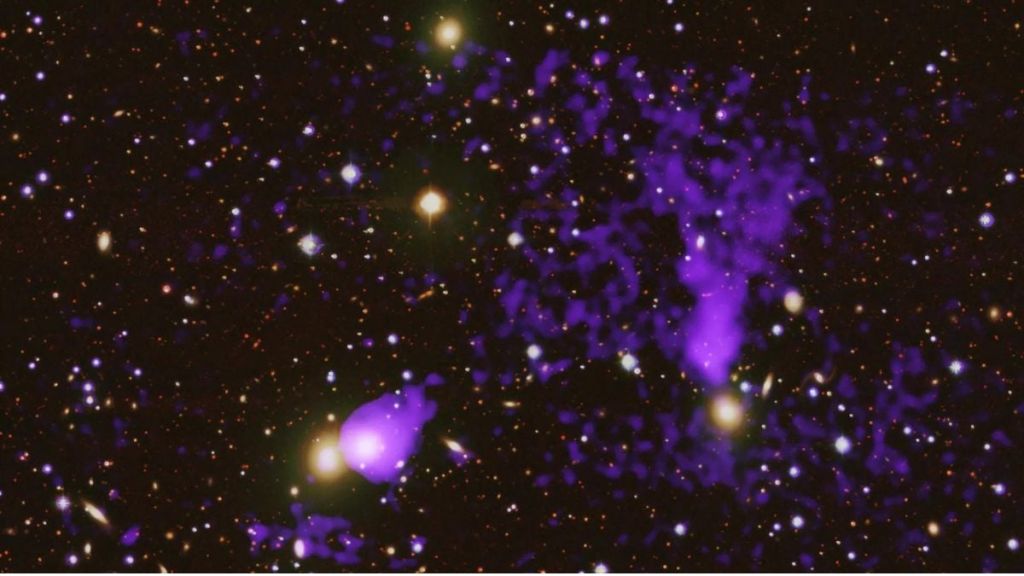
Astronomers have made important progress in comprehending the intricate dynamics of the galaxy cluster Zwicky 8338 (Z8338) by using NASA's Chandra X-ray Observatory. They found two streams of extremely hot gas intersecting, indicating the possibility of new formations in the cluster.
Galaxy Cluster
A notable aspect of this study is the discovery of a massive, comet-like tail of hot gas following a galaxy in Z8338. As the galaxy passed through hot gas, it lost some of its own gas, resulting in the formation of a tail that is over 1.6 million light-years long. The cluster now displays a remarkable visual and structural phenomenon, as the tail has divided into two streams.
Scientists have discovered streams of hot gas trailing behind a galaxy for over 1.6 million light-years. The findings suggest that "crossing the streams" doesn't necessarily end in disaster. In fact, it may lead to the creation of new structures: https://t.co/M4YTmqNnNd pic.twitter.com/qM6VTNze4S
— Chandra Observatory (@chandraxray) September 19, 2024
Navigating Across Galaxy Streams
Evidence indicates that the two gas streams following the galaxies in motion have intersected, adding to the disorderly conditions of Z8338. This particular group is distinguished by its chaotic combination of galaxies, extremely hot gas, and shock waves, resembling the sonic booms created by jets traveling faster than the speed of sound. The merger of two galaxy clusters resulted in the formation of Z8338.
Visual Aspects
A fresh combined picture depicts this mesmerising display. X-ray images taken by Chandra, depicted in purple, outline extremely hot gas with a mass that surpasses the combined mass of the galaxies in the cluster. The Chandra data shows where the gas has been ejected from the galaxies in motion. At the same time, images captured by the Dark Energy Survey at the Cerro Tololo Inter-American Observatory in Chile offer a glimpse of the separate galaxies dispersed across the identical area.
Dynamics Of Gas Tails
In Z8338, the gas tail detected is around 800,000 light-years in length and is seen as vertical in the combined image. Scientists theorise that a big galaxy is losing its tail while moving through the cluster. Significantly, the leading part of this tail holds cool gas that is positioned roughly 100,000 light-years away from its original galaxy. This tail has divided into two separate parts as well.

What Does The Study Conclude?
The research team suggests that the gas tail separated from the big galaxy due to the passage of the other, longer tail. This mixing of the streams probably resulted in the separation of the tail, providing more understanding of how cooler gas clouds detach and disintegrate.
The results indicate that pockets of colder gas, such as those observed in the separate tail, can endure for a minimum of 30 million years after being detached. This prolonged lifespan provides a special chance for the creation of stars and planets within these nebulae.
Previous Discoveries
Researchers have previously observed gas tails in Z8338 on more than one occasion. An earlier finding uncovered a smaller set of tails following behind a neighbouring galaxy. Nonetheless, the extended set of tails was only discovered due to a more thorough examination with Chandra, revealing fainter X-ray emissions that were previously unseen in optical data.